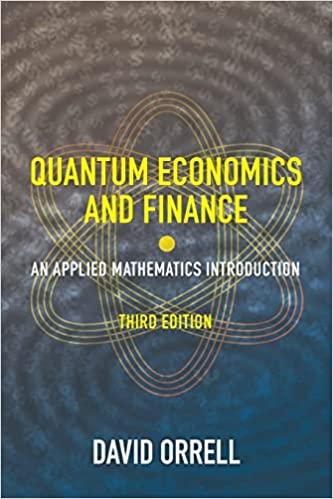Question
9.1.3 LONG -TERM FINANCIAL MANAGEMENT QUESTION ONE You have been appointed as a financial consultant by the directors of Chennai Holdings. They require you to
9.1.3 LONG -TERM FINANCIAL MANAGEMENT
QUESTION ONE
You have been appointed as a financial consultant by the directors of Chennai Holdings.
They require you to calculate the cost of capital of the company.
The following information is available on the capital structure of the company:
1 500 000 Ordinary shares, with a market price of R3 per share. The latest dividend declared was 90 cents per share. A dividend growth of 13% was maintained for the past 5 years.
1 000 000 12%, R1 Preference shares with a market value of R2 per share.
R1 000 000 Debentures due in 7 years with a current market value of R 951 356 and a before tax cost of 10%
R900 000 14% Bank loan, due in December 2016 Additional information:
1. The company has a tax rate of 30%.
2. The beta of the company is 1.7, a risk free rate of 7% and the return on the market is 15%. Required:
1.1 Calculate the weighted average cost of capital (WACC). Use the Gorden Growth Model to calculate the cost of equity. (17)
1.2 Calculate the cost of equity, using the Capital Asset Pricing Model.
QUESTION TWO
The shareholders of Bee-Bee Company have voted in favour of a buyout offer from Honey Ltd. The information pertinent to each firm is as follows:
Data Bee-Bee Honey
PE Ratio 4 12
Share in Issue 120 000 240 000
Earnings (after tax) R 360 000 R 720 000
Bee-Bee shareholders will receive one share in Honey for every share they hold.
2.1.1 What will the EPS of Honey be after the merger?
2.1.2 Calculate Honeys share price and PE ratio if the NPV of the acquisition is zero.
2.1.3 What is the value of Bee-Bee to Honey?
QUESTION THREE
Island Enterprises has the option to invest in machinery in projects A and B but finance is only available to invest in one of them. You are given the following projected data:
|
| Project A | Project B |
| Initial cost |
| 450 000 |
| Net profit |
|
|
| Year 1 | 36 000 | 69 000 |
| Year 2 | 75 000 | 69 000 |
| Year 3 | 102 000 | 69 000 |
| Year 4 | 129 000 | 69 000 |
| Year 5 | 81 000 | 69 000 |
Additional information
1. All cash flows take place at the end of the year except the original investment in the project which takes place at the beginning of the project.
2. Project A machinery will be disposed of at the end of year 5 with a scrap value of R60 000.
4. Depreciation is calculated on a straight-line basis.
5. The discount rate to be used by the company is 12%
Required
Use the information provided by Island Enterprises to answer the following questions:
3.1 Calculate the payback period for project B. (Answer must be expressed in years and months)
3.2 Calculate the accounting rate of return (on average investment) for project A. (Answer must be expressed to two decimal places)
3.3 Calculate the net present value of each project. (Round off amounts to the nearest Rand.)
3.4 Using your answers from question 3.3, which project should be chosen? Why?
QUESTION FOUR
Info Tech wishes to upgrade its computer networks in order to save costs. A suitable system costing R480 000 can either be purchased or leased. The following are the terms of the purchases and lease agreements:
Cost of owning:
The cost could be financed with a Bank loan at 16% payable in four years. Annual repayments (at the end of each year) are calculated at R171 540.At the end of the period the equipment will be sold at its scrap value of R40 000 and a straight-line method of depreciation will be used.
Insurance and maintenance costs of R20 000 per annum will be paid by Info Tech. Interest payments for the four years are
| Year | Interest payment R |
| 1 | 76 800 |
| 2 | 61 640 |
| 3 | 40 056 |
| 4 | 23 600 |
3. Project B machinery will be disposed of at the end of the year with a nil scrap value.
Cost of leasing:
The lease would require an annual payment of R156 600 over four years. The annual service cost of R16 000 will be borne by the lessor. The lessee will exercise its option of purchasing the equipment for R40 000 at the termination of the contract.
Additional information:
The pre-tax cost of the debt is 10% and the company is in the 30% tax bracket.
Required:
4.1. Calculate the after-tax cash outflows and the present value of the cash outflows under each alternative.
Step by Step Solution
There are 3 Steps involved in it
Step: 1

Get Instant Access to Expert-Tailored Solutions
See step-by-step solutions with expert insights and AI powered tools for academic success
Step: 2

Step: 3

Ace Your Homework with AI
Get the answers you need in no time with our AI-driven, step-by-step assistance
Get Started


